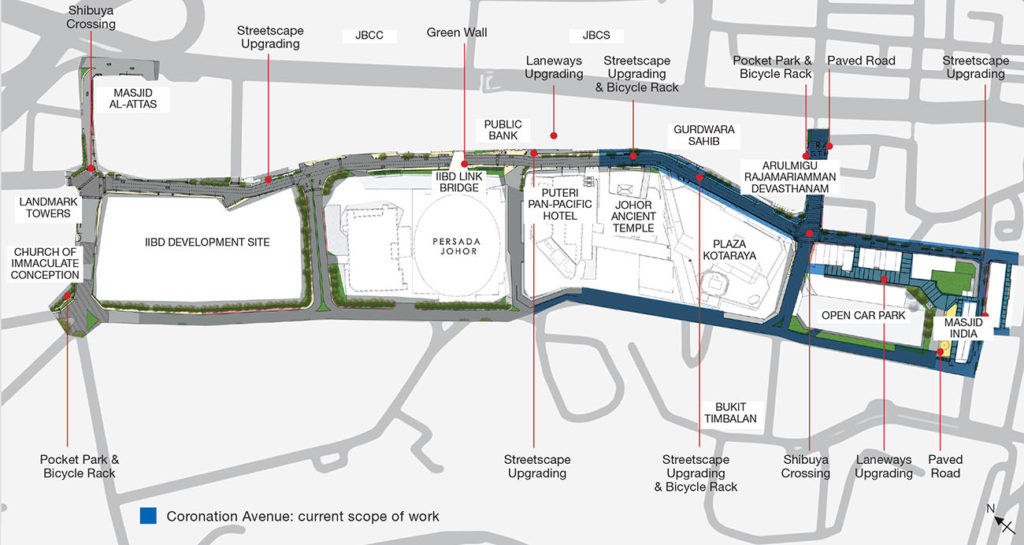Think City Projects Highlight
September 24, 2021
FuturArc conducted an interview with Gan Yi Reng and Daniel Lim of Think City about placemaking to create more equitable cities. Here are some of their projects.

GYR: When we first started in Johor Bahru, we did a baseline study and tried to understand the population and land use of the city. And from there, one of the issues that we observed was actually the secondary connectivity in the city. So, that’s how we started the Laneways Improvement Programme (LIP) together with the city council to build community ownership and increase walkability in the city.
To understand the site, we did a site analysis, discovered what the issues were and observed how people used it before we engaged any conversation with them. So, during the community engagement processes, instead of inviting them to a hotel ballroom, we went to them to conduct the sessions at one of the cafés near the back lane. So, in this space, we brought the business owners together to find out what issues they were facing, what were the challenges, and how did they use the back lane. We found out mostly they would just close up their back doors and then just left the space be. Based on the engagement sessions, we drew up the list of issues, categorised them into different focus areas and incorporated design responses to address them. For example, to resolve the illegal parking problem, we try not to use hard materials, but instead chose a planter box to deter illegal parking. So, from the assessment, engagement and understanding the site, the considerations for placemaking came about. And we tried to demonstrate it with a pilot project to test out whether those ideas would really work on the ground. The pilot project went through, and also carried out some activation programmes with the local theatre group.

DL: The planter box versus bollard thing is very interesting. In the beginning, we wanted to avoid using bollards because they are so hard and typical. So, we started by putting in movable planter boxes, but over time, we discovered that people would move them. So, there will be instances where the community determines what works better for them— and in this example, we finally had to replace the planter boxes with bollards to finally resolve the problem of illegal parking.
The heart of this process is the people, always. Working with communities and different stakeholders is key and the idea here is a participatory process of thought.
Understanding site conditions and conducting preliminary analysis
All of the shophouses are low-rise (two to three storeys) with a straight façade. The site had been identified as disorganised and unsystematic. It was also associated with social issues, mainly safety, health/hygiene, cleanliness and maintenance.
One of the tenants operates an illegal recycling centre without a proper system, process and maintenance. Site 1 had greater potential to be explored as the pilot project to showcase best practices in improving the public space. The improvement of Site 1 would:
- Encourage community interaction in downtown, Johor Bahru.
- Increase property value.
- Provide safe space for the tenants and visitors.
- Improve the visual environment in Johor Bahru City Centre.

Lorong Belakang Tan Hiok Nee – Before 
Lorong Belakang Tan Hiok Nee – After 
Programming process with the community
GYR: After completing the laneways project, Coronation Avenue project began. The idea was to create a landmark street in downtown Johor Bahru that highlights the cultural activities and assets, and enhanced functionality, connectivity, as well as conservation efforts to celebrate the diversity of Bangsar Johor. The idea is also how we can improve walkability. When the RTS and the BRT, meaning public transport projects, are all completed, this can help in terms of promoting people to walk in the city instead of using vehicles.
[This is an excerpt. Subscribe to the digital edition or hardcopy to read the complete article.]
RELATED STORY:

Read more Urban Design stories below:
To read the complete article, get your hardcopy at our online shop/newsstands/major bookstores; subscribe to FuturArc or download the FuturArc App to read the issues.

